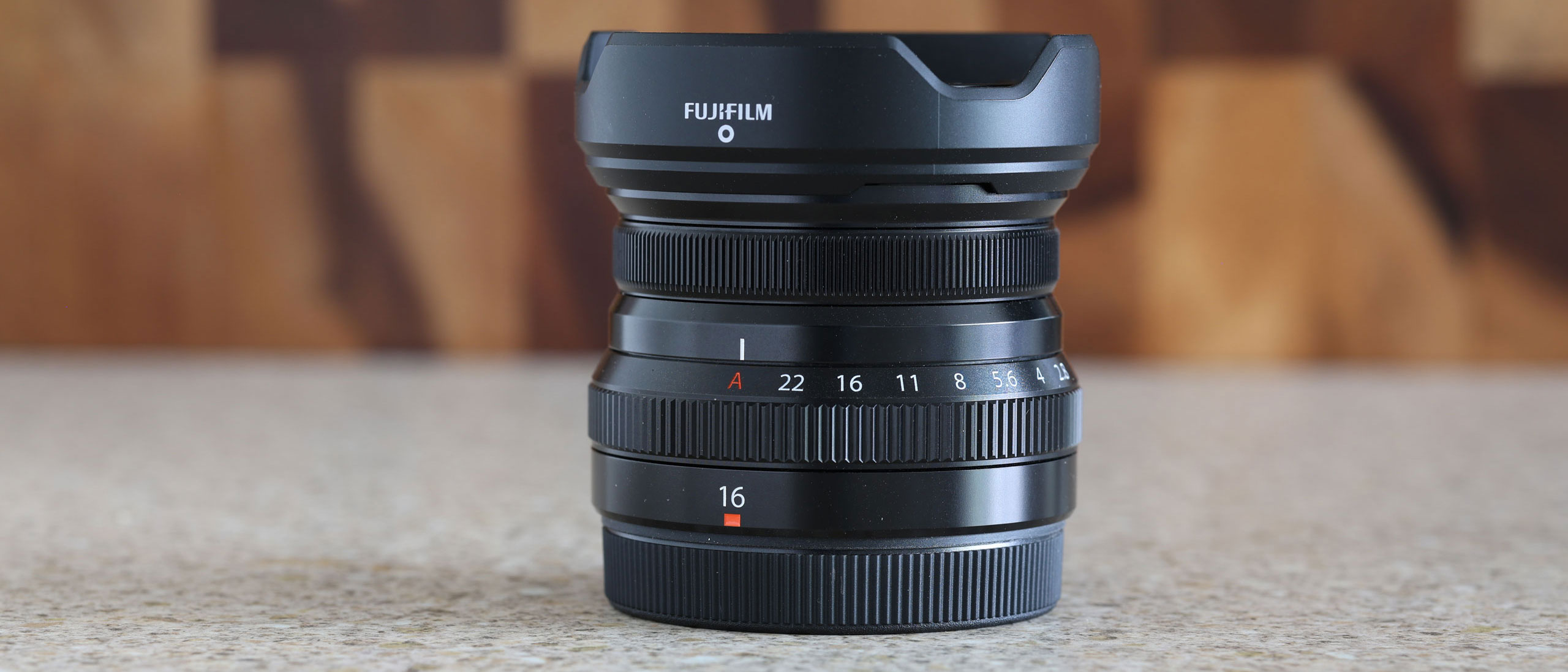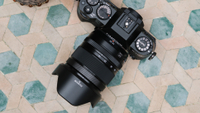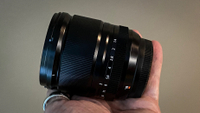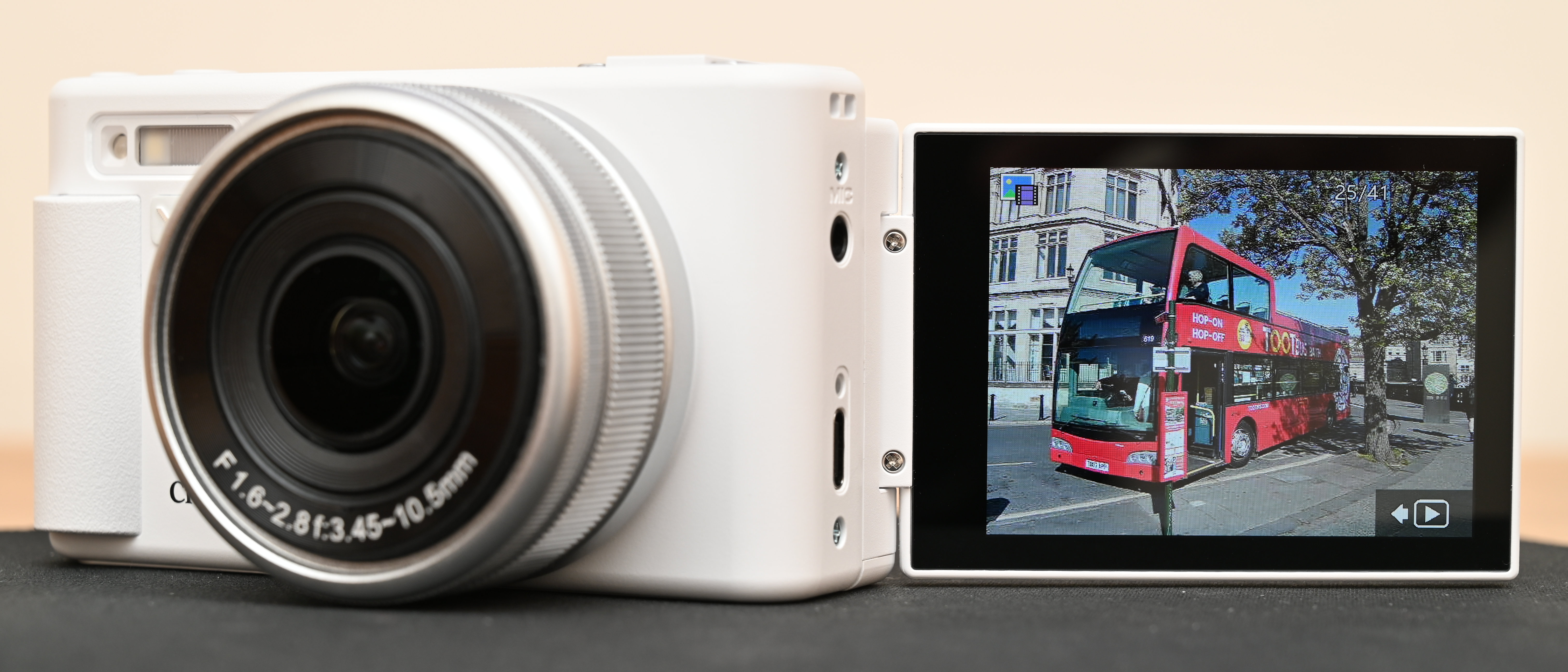Digital Camera World Verdict
Fujifilm’s professional lenses boast fast maximum apertures and sometimes hefty price tags, and if you’re using your X-mount camera for high-end or professional work, that’s the way to go. But the XF16mm F2.8 belongs to a group of smaller primes which have been a great match for the company’s X-E and X-Pro style rangefinder cameras. The XF16mm F2.8 was a relatively late addition, and while its specs won’t get anyone excited, it’s small, neat and affordable – and its performance isn’t bad either.
Pros
- +
Compact and inexpensive
- +
Physical aperture ring
- +
Snappy, silent autofocus
- +
Weather sealed construction
Cons
- -
Edge definition not as good as the center
- -
F/2.8 is slow by today’s standards
Why you can trust Digital Camera World
Fujifilm’s camera history has been kind of like a game of two halves. It made its name with compact retro-styled X-T, X-E, and X-Pro cameras with compact bodies and external exposure controls. These came with a range of compact f/2 prime lenses designed for compactness and affordability, including an 18mm f/2, 23mm f/2, 35mm f/2, and 50mm f/2. This XF16mm F2.8 came along a little later to provide a 24mm equivalent prime no larger than the rest, and yet with a physical aperture ring and weather sealing.
These are among the best Fujifilm lenses, certainly for travel photography and fans of old-school external exposure controls.
Since then, though, Fujifilm has shifted gears, aiming for a more mainstream enthusiast/hybrid market with the X-S10 and X-S20, and higher-end professional users, with the Fujifilm X-H2 and X-H2s. These are among the best Fujifilm cameras to buy today but have lost some of the uniqueness of earlier models.
The X-T series carries on with the Fujifilm X-T5 and X-T50, but the X-E and X-Pro range appear to have gone. Along with this has been a shift towards larger, professional zooms and fast f1/4 primes which appeal to a wider market but don’t sit so well on the smaller cameras.
The XF16mm F2.8, however, will still have strong appeal for owners of smaller or more modest Fujifilm bodies. Its maximum aperture may be modest, but it’s compact, inexpensive, and practical – and it could fill a gap in many users’ prime lens line-up.
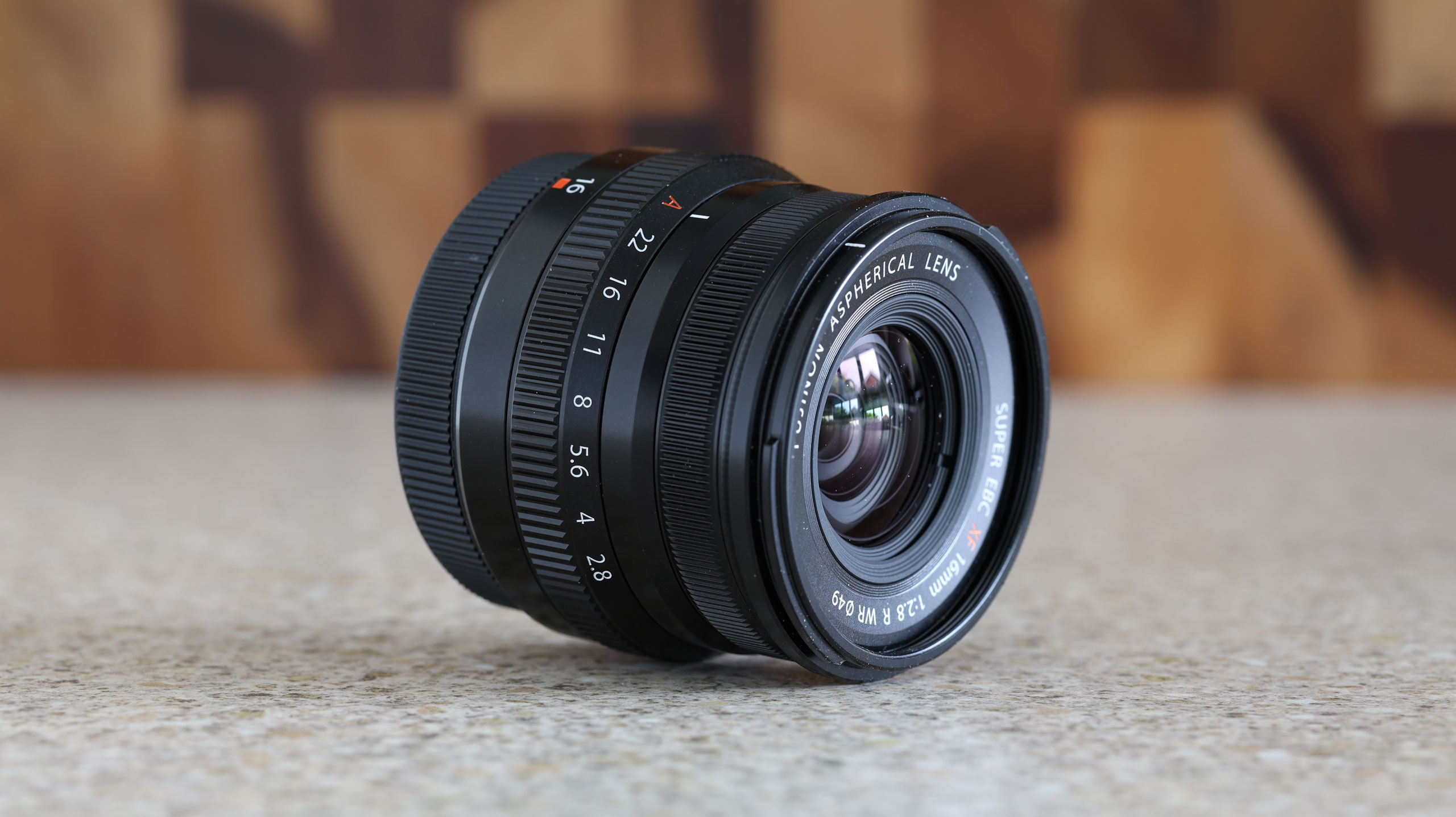
Fujinon XF 16mm F2.8: Specifications
| Focal length | 16mm (24mm equivalent) |
| Maximum aperture | f/2.8 |
| Construction | 10 elements in 8 groups |
| Minimum focus distance | 17cm |
| Maximum magnification | 0.13x |
| Filter size | 49mm |
| Size | 60.0 x 45.4mm |
| Weight | 55g |
Fujinon XF 16mm F2.8: Price and availability
The Fujinon XF16mm F2.8 is widely available and costs around $399 / £339. Fujifilm also makes an XF16mm F1.4 R WR which is quite tempting, because it has a maximum aperture 2 stops faster – though it does cost almost three times as much. The other alternative is the much newer Fujinon XF18mm F1.4 R LM WR, but that has a slightly longer equivalent focal length of 27mm, and as well as being a lot more expensive, it’s physically larger and longer too. If you’re happy with an f/2.8 maximum aperture, the little XF16mm F2.8 is terrific value for money.
Fujinon XF16mm F2.8: Design and handling
The XF16mm F2.8 is pretty cheap by prime lens standards, especially for one that has a physical aperture ring and weather-sealed construction. It feels very well made indeed, with a metal mounting plate (of course) and a petal-shaped lens hood included.
Everything about this lens feels well-designed. The aperture ring is clearly marked and is beautifully weighted with 1/3-stop clicks between the major aperture markings and an A (auto) setting past f/22, where the lens aperture is controlled by the camera body.
The manual focus ring feels really smooth and is mounted ahead of the aperture ring where the lens barrel tapers in slightly. This means there’s no danger of mistaking one ring for the other and you can find both easily by touch.
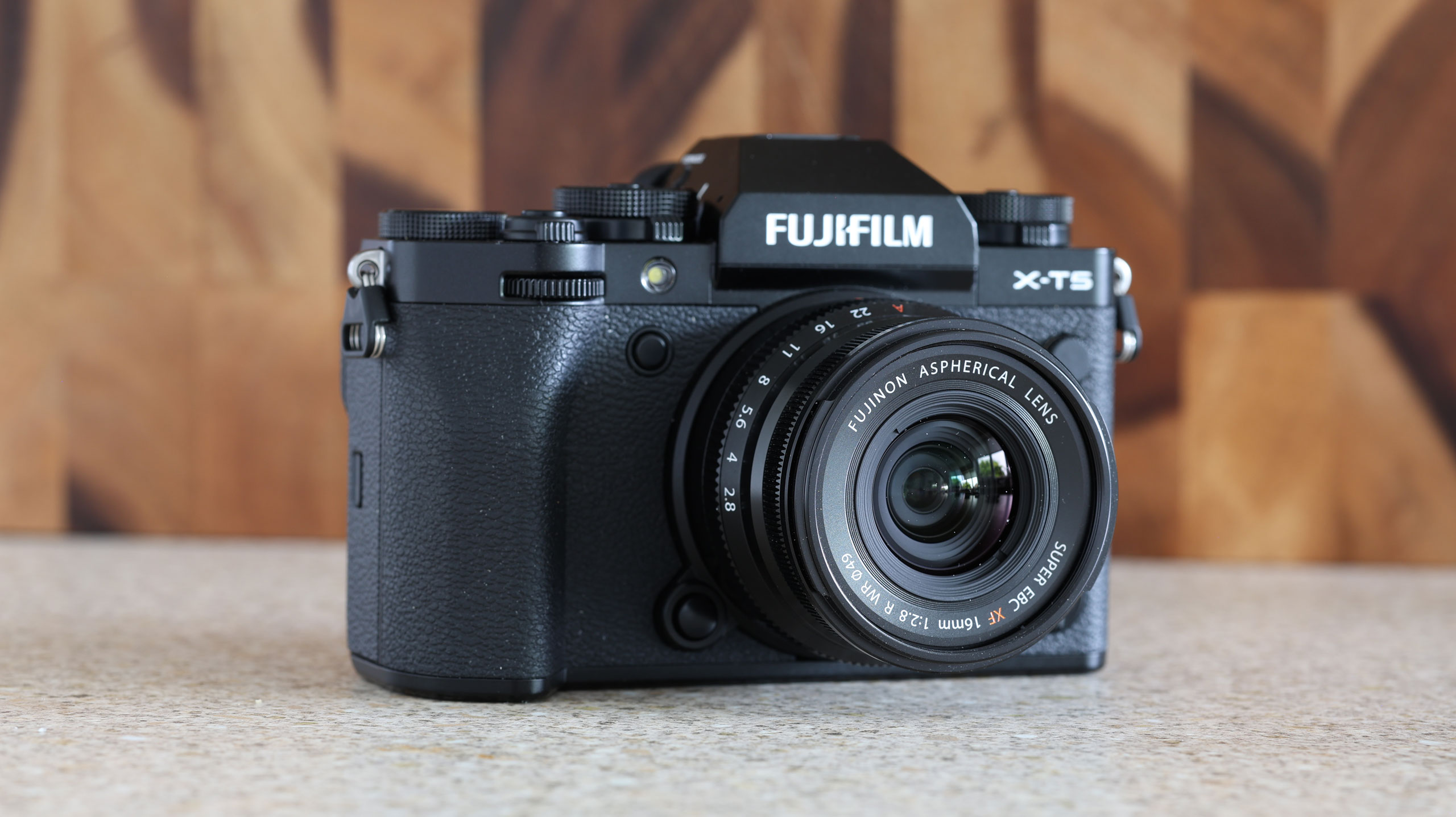
However, there’s no focus distance scale on this lens, and hence no depth of field markings for zone or hyperfocal distances. These can be displayed on the camera, though, so it’s still perfectly doable.
Beyond that, there’s not much more to say. This is a simple, solid-feeling little lens that gets on with the job without any fuss or distractions. It also looks good and balances well on any Fujifilm bodies.
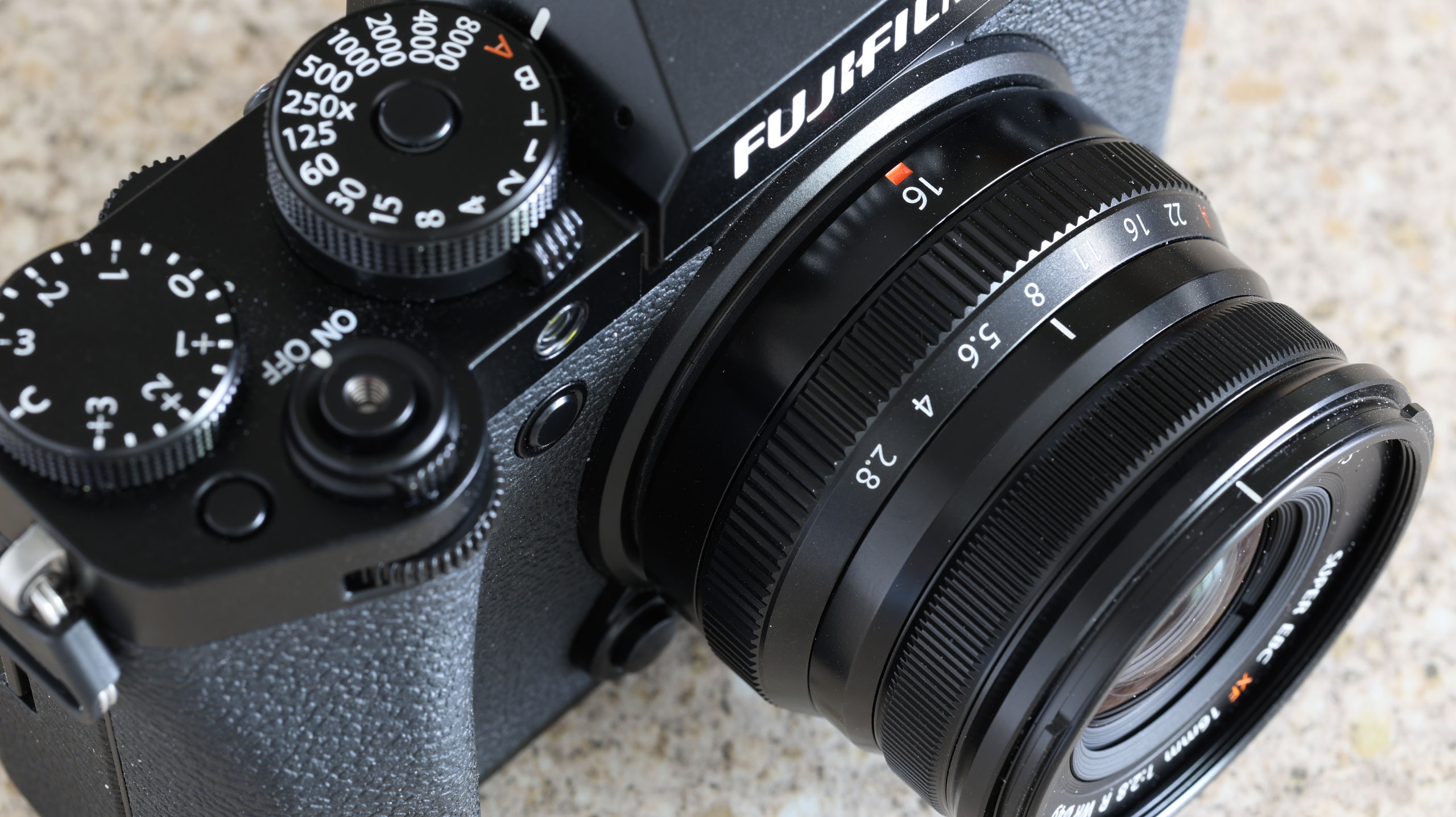
Fujinon XF16mm F2.8: Performance
Optically, the XF16mm F2.8 is good but not stellar. Fujifilm’s in-body corrections and embedded profiles effectively remove chromatic aberration, vignetting, and distortion, but while the edge-to-edge performance is good on older Fujifilm bodies, the 40MP sensor in my X-T5 does make the fall-off in resolution towards the edges of the frame more apparent.
This is the curse of high-resolution sensors. All those megapixels can turn anyone into a pixel-peeper, and it’s only human nature to zoom right in to see how much detail you’ve captured. Provided you don’t zoom in too far – say 100% on a 4K monitor – the images from this lens look great. Zoom in further to 200%, say, and you’ll see that while the center resolution is excellent, it does fall away somewhat toward the edges.


Will this bother you? On a 26MP, 24MP, or older 16MP Fujifilm camera, I doubt it. It’s only with the latest 40MP sensors it starts to become apparent. That’s a bit of a shame because the little XF16mm 2.8 is such a wonderful match for an X-T5 body, and especially the new X-T50.
The autofocus performance is excellent. Fujifilm’s smaller lenses don’t get the company’s high-speed Linear Motor actuators but it doesn’t seem to matter here. The XF16mm F2.8 is whisper quiet and focuses in an instant.

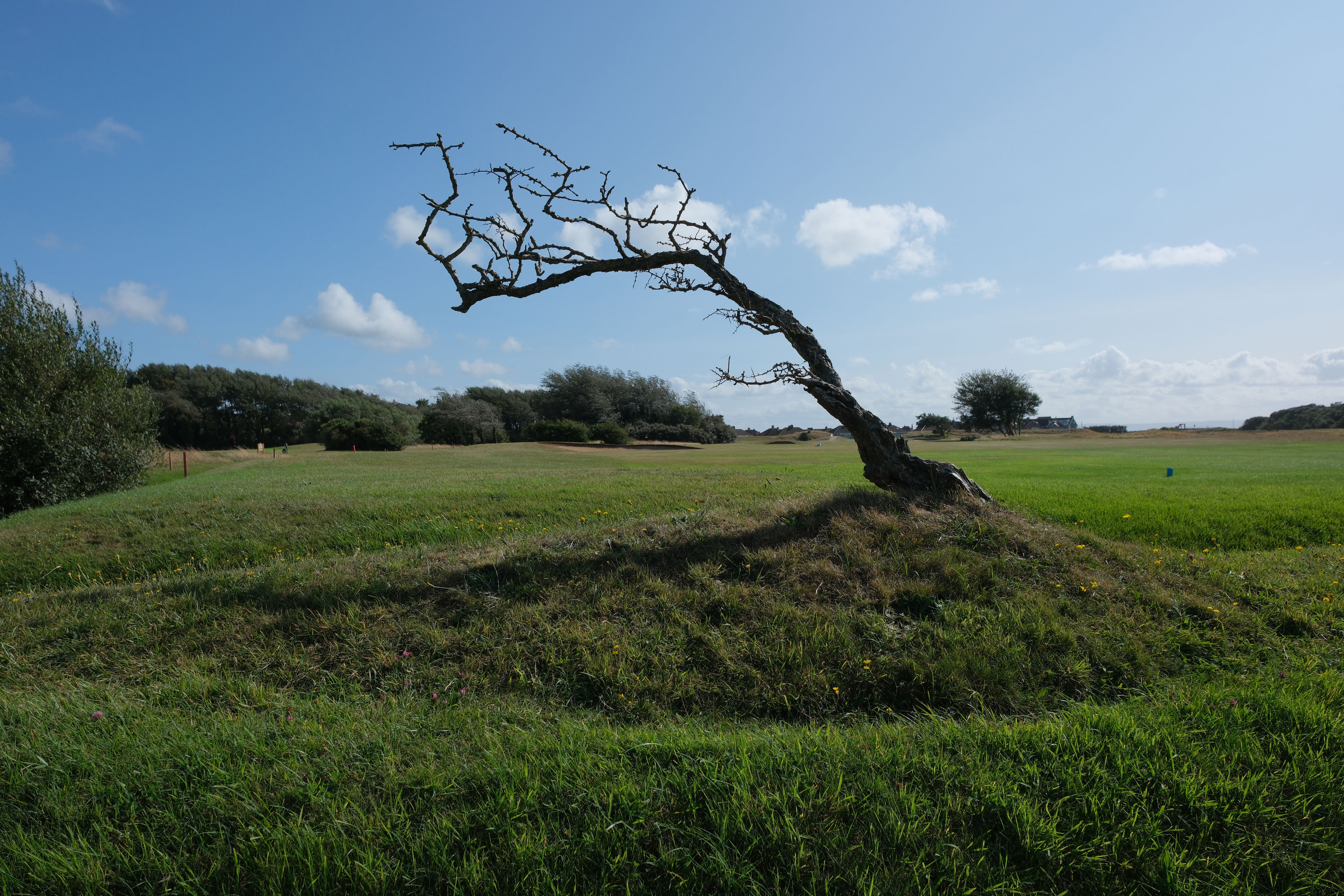
Fujinon XF16mm F2.8: Sample images
Here’s a selection of shots taken with the XF16mm F2.8. It’s an ideal walkaround lens for city streets and architecture, and landscapes too. The modest F2.8 maximum aperture only becomes a limitation in dimly-lit interiors, but if you’re using a later Fujifilm body with IBIS, you can get around that with slower shutter speeds.






Fujinon XF16mm F2.8: Verdict
The Fujinon 16mm F2.8 is a super little lens that’s really well made and nice to handle. The controls and finish are so good that it feels as if it ought to cost a lot more than it actually does. What keeps the cost and the size down is that maximum aperture of f/2.8, which isn’t much in a world where 24mm equivalent primes are typically f/1.8 or f/1.4. But if that’s the price of compactness and affordability then I’m happy to pay for it. (I actually did pay for it – I own this lens.)
Ideally I would like it to be a little sharper at the edges than it is when I use it on my X-T5, but that’s an issue raised by this camera’s unprecedented resolution. It is proving quite difficult to find affordable X-mount lenses that can live up to this sensor’s potential.
I don’t want to overstate this, though. You have to be a bit of a pixel peeper to notice in the first place, and if you’re using a 26MP body or lower, then it’s pretty much a no-issue.
I say that because it would be a real shame if this lens was overlooked because it’s not perfect. It’s small, affordable, practical and beautifully made.
| Features | This lens's maximum aperture of f/2.8 is on the low side, but its physical aperture ring and weather sealed construction are major plus points | ★★★★☆ |
| Design | The XF16mm F2.8's key attribute is its size. It's compact enough for any travel setup and balances well on any X-mount body | ★★★★★ |
| Performance | The optical performance is generally very good, but definition does fall away at the edges somewhat, and this is very noticeable on Fujifilm's newer 40MP cameras | ★★★★☆ |
| Value | This is not an expensive lens, and yet the finish and the controls are first rate. The specs might be modest, but it's great value | ★★★★☆ |
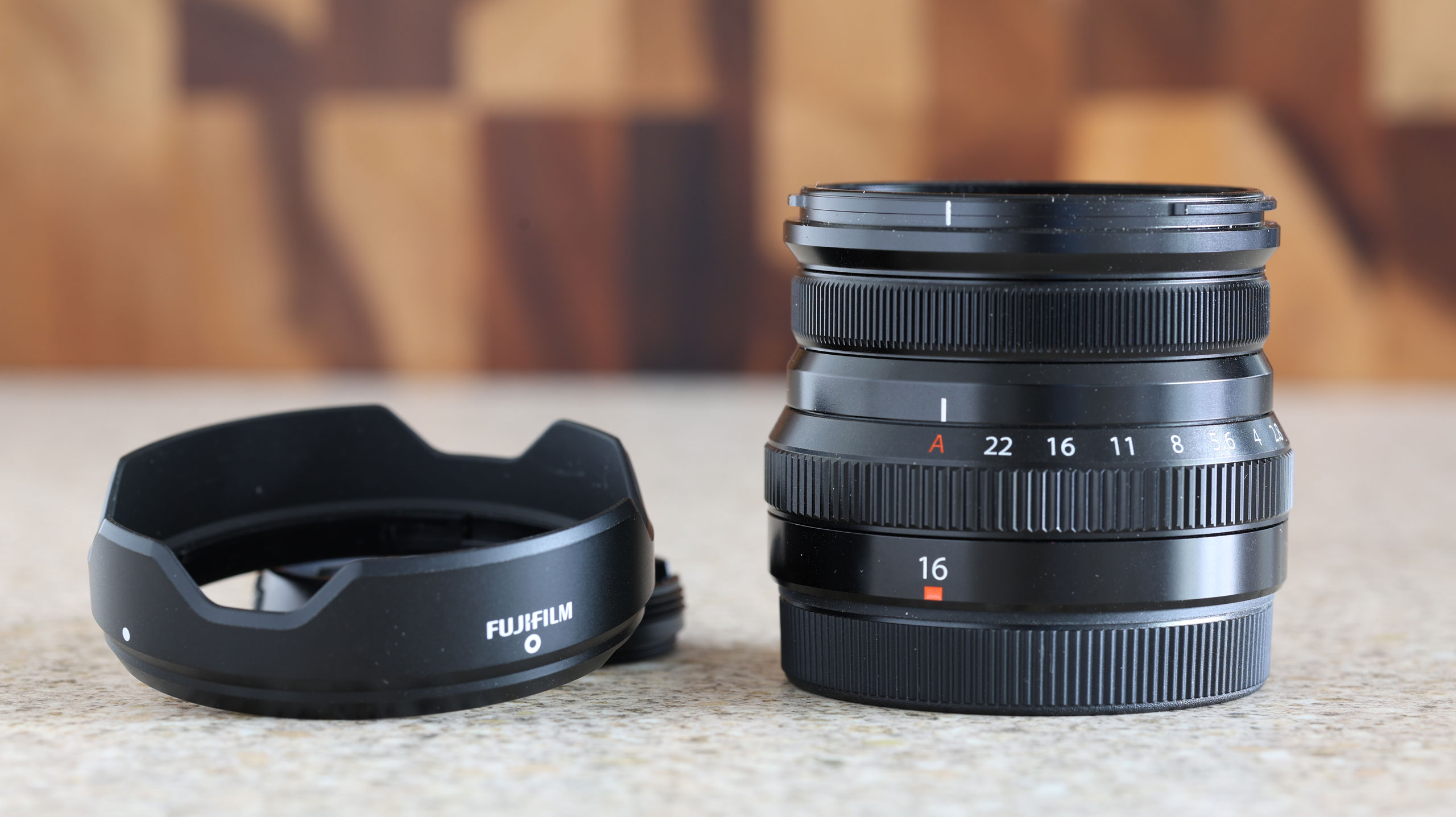
Should you buy the Fujinon XF16mm F2.8?
✅ Buy this...
- If you want a compact wide-angle prime that doesn’t cost the earth
- If you regularly shoot in dusty or wet conditions where weather sealing becomes important
- If you want to get back to basics with hands on aperture control
🚫 Don't buy this...
- If you’re looking for maximum edge to edge resolution on a 40MP Fujifilm body
- If you need a wide maximum aperture for low light or astrophotography
- If you need image stabilization for an older, non-IBIS body – this lens is not stabilized
Fujinon XF16mm F2.8: Alternatives
The Fujifilm XF 16-50mm f/2.8-4.8 R LM WR is the company’s latest kit lens and it offers the same f/2.8 maximum aperture as the XF16mm F2.8 at the 16mm setting, plus the versatility of a zoom. It’s not as small, however, and does not have the same kind of physical aperture ring.
The newer Fujifilm XF 18mm f1.4 R LM WR is a larger and more expensive lens with a slightly less wide angle of view, but it is a whole two f-stops faster and has excellent optical performance. It's a better choice for outright optical quality.

Rod is an independent photography journalist and editor, and a long-standing Digital Camera World contributor, having previously worked as DCW's Group Reviews editor. Before that he has been technique editor on N-Photo, Head of Testing for the photography division and Camera Channel editor on TechRadar, as well as contributing to many other publications. He has been writing about photography technique, photo editing and digital cameras since they first appeared, and before that began his career writing about film photography. He has used and reviewed practically every interchangeable lens camera launched in the past 20 years, from entry-level DSLRs to medium format cameras, together with lenses, tripods, gimbals, light meters, camera bags and more. Rod has his own camera gear blog at fotovolo.com but also writes about photo-editing applications and techniques at lifeafterphotoshop.com
